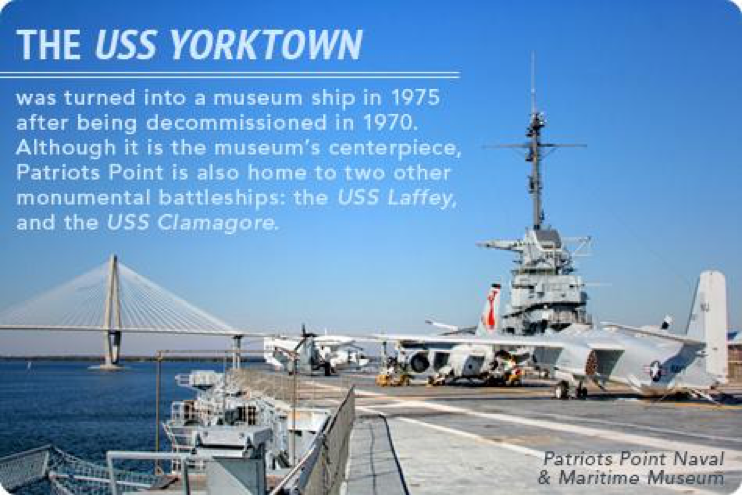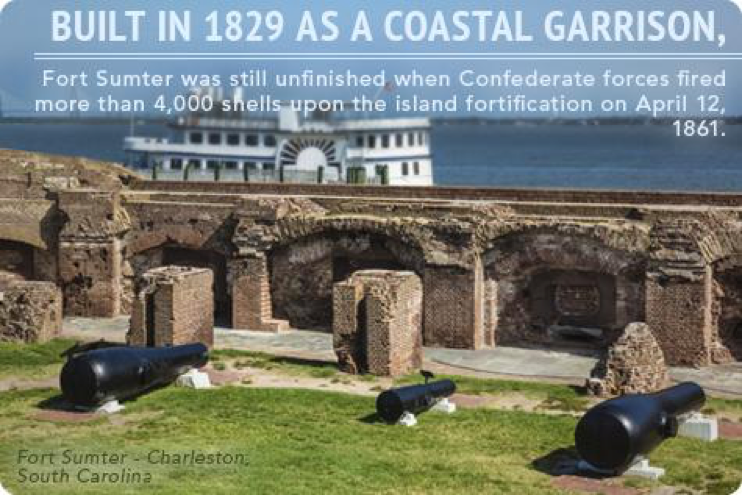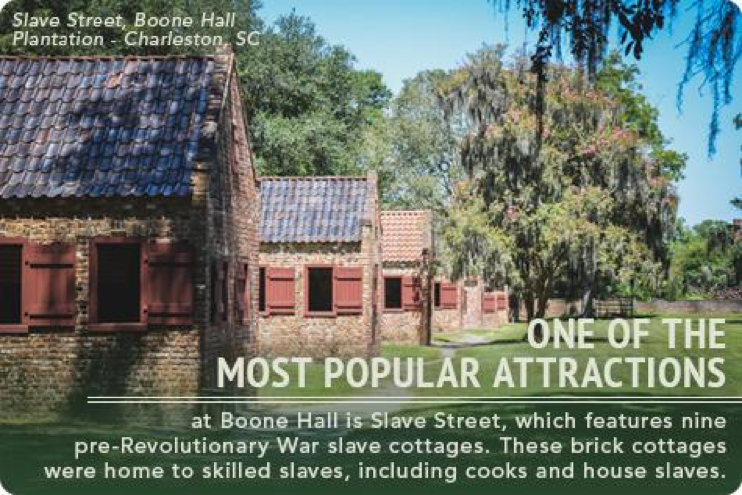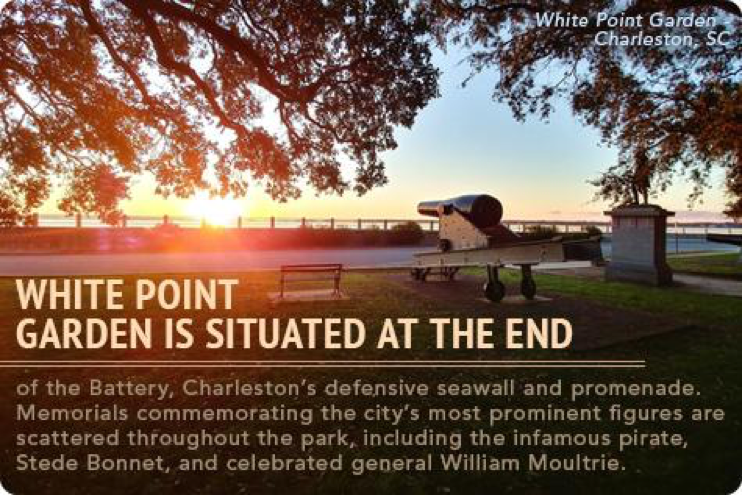If you’re a true history buff, you’re sure to be fascinated by the long and rich military history in Charleston. Nearly 350 years old, Charleston has a long and turbulent past. From the arrival of early English settlers in 1670 to the Civil War and beyond, the Holy City has been defending her shores and showing her military might for centuries.
Charleston has played pivotal roles in the nation’s most significant wars, and the city has no shortage of iconic military sites and artifacts to prove it. To put it simply, it’s a military-history-lover’s paradise.
Ready to explore 350 years of military history in Charleston? Although nothing beats visiting the Holy City in person, we’ll give you the rundown of the city’s exciting military history and prepare you for your next Charleston vacation.
Charles Towne Landing
When it comes to exploring Charleston’s vast military history, start from the beginning at Charles Towne Landing. A group of about 120 English settlers arrived here in 1670, and they made the site their first permanent home in the Carolinas.
Located on the west bank of the Ashley River, Charles Towne Landing became a valuable trading post, as well as a village. Originally named for King Charles II of England, the settlement became known as Charleston in the late 1700s after the Revolutionary War.
Today, Charles Towne Landing is a state historic site with numerous attractions for the entire family to enjoy. The Exhibit Hall is where history lovers can learn about the founding of Charleston and how the city came to be, as well as its early history of fending off pirates and marauders.
Other popular attractions at Charles Towne Landing include The Adventure, a floating exhibit and full-scale replica of a 17th-century ship which both adults and kids will enjoy. Visit on the third Sunday of each month and you’ll see 17th-century cannons being fired for demonstrational purposes.
Patriots Point Naval & Maritime Museum
You can’t leave Charleston without stopping by Patriots Point. Located in the charming town of Mount Pleasant, this impressive naval museum offers visitors a glimpse into Charleston’s rich maritime history.
Patriots Point Museum is the fourth largest naval museum in the country and the only maritime museum in the state. The museum is perhaps best known for being home to USS Yorktown, a WWII Essex aircraft carrier which participated in the Pacific Offensive against the Japanese in late 1943.
The USS Yorktown was turned into a museum ship in 1975 after being decommissioned in 1970. Although it is the museum’s centerpiece, Patriots Point is also home to two other monumental battleships: the USS Laffey, and the USS Clamagore.
The USS Laffey is the only surviving Sumner-class destroyer in North America. The ship was given the nickname, “The Ship That Would Not Die” after surviving multiple Kamikaze attacks and D-day bombings.
Currently, visitors can also see the USS Clamagore, a GUPPY III Submarine which served for more than 30 years during the Cold War. However, plans are underway to have the vessel sunk off the coast of Florida and turned into an artificial reef.
In addition to these impressive battleships, visitors will find numerous collections worth exploring at Patriots Point. One that should not be missed is the Vietnam Experience Exhibit. This interactive experience honors Vietnam veterans and tells the stories of those in the Brown Water Navy and the Tet Offensive.
Fort Sumter
Those interested in the Civil War will enjoy a trip to Fort Sumter, the famous sea fort where the first shots of the Civil War were fired. Built in 1829 as a coastal garrison, Fort Sumter was still unfinished when Confederate forces fired more than 4,000 shells upon the island fortification on April 12, 1861.
The attack came after President Abraham Lincoln announced plans to resupply Fort Sumter. Confederate General P.T.G. Beauregard initiated the 34-hour bombardment, which resulted in Union forces surrendering on April 13. While little blood was shed during this battle, it marked the beginnings of the deadliest conflict in American history.
Confederate troops held Fort Sumter for nearly four years, fending off bombardments by Union troops. General Beauregard finally abandoned the fort when General William Tecumseh Sherman marched through South Carolina and captured the city of Charleston.
Fort Sumter is only accessible by ferry, but history lovers likely won’t mind the 30-minute ride. A voice-recorded history of Fort Sumter plays gently in the background for the duration of the ride.
Upon arrival, you can explore the grounds and see damage to the fort caused by the second battle at Fort Sumter in 1863. Tours last just over two hours, giving you plenty of time to explore the fort in all her war-ravaged glory.
Fort Moultrie
Fort Moultrie may not be as grand or well-known as Fort Sumter, but history buffs will love it all the same. One of the first forts on Sullivan’s Island, and one of the oldest on the Eastern Seaboard, Fort Moultrie boasts over 170 years of seacoast defense history.
The fort holds significance not only for its important roles in the Revolutionary and Civil War, but also because it’s where South Carolina’s flag originated. The blue flag with its white palmetto tree symbolizes the state’s long history.
On June 28, 1776, Colonel Moultrie and his force of Patriot soldiers stood ready behind a series of unfinished palmetto logs walls, determined to protect the city from incoming British warships. When British forces attacked the fort, it didn’t matter that the log wall was unfinished—the soft palmetto logs absorbed the cannon attacks, allowing colonial forces to fend off the British army.
Although the fort was badly battered after the attack, it was a decisive victory for the troops and a stunning display of bravery. The fort was named for the brave colonel, and the state officially adopted a blue flag with a white palmetto tree in his honor.
Fort Moultrie isn’t large, but it’s still an important piece of American history that shouldn’t be missed!
CSS Hunley
As the first combat submarine to sink a warship (the Housatonic) the H.L. Hunley had a short, yet successful career in the Civil War. However, the deaths of the Hunley crew continues to capture our interest more than 150 years later.
The 40-foot long Confederate submarine was raised from the ocean in 2000 and can now be viewed at the Warren Lasch Conservation Center in North Charleston. In addition to the impressive submarine, you can also see salvaged artifacts from the Hunley and learn more about the eight-man crew.
While the deaths of the crew have long remained a mystery, recent breakthroughs have uncovered new insight. According to researchers at Duke, it was the blast wave from the torpedo fired by the ship that caused the immediate deaths of the crew.
Old Exchange and Provost Dungeon
One of South Carolina’s most historic buildings, the Old Exchange and Provost Dungeon has served multiple functions over the years. Perhaps most notably, the cellar of the building was used as a Provost dungeon by British forces during the American Revolution, and it held pirates in the early 18th century.
Now a museum, the building has more history outside of its dungeon. The great hall in the building was the place where the South Carolina Convention ratified the United States Constitution in 1788. George Washington held several meetings here, and the Old Exchange has served various functions in major wars, such as the Civil War and World War II.
Powder Magazine
For a deeper look inside South Carolina’s colonial military history, walk through The Powder Magazine in Downtown Charleston’s French Quarter neighborhood. Originally used to store gunpowder, The Powder Magazine was built in 1713 and is the state’s oldest surviving building.
When South Carolina was a British colony, it didn’t have the luxury of a standing army or navy. Charles Towne was surrounded by walls guarded by 100 cannons. The gunpowder was stored in The Powder Magazine, arming the city with much-needed protection.
Although the building itself has an incredible amount of history, there are historical treasures to be found inside the museum as well. With interesting military artifacts, interactive exhibits, and models of the original walled city, both adults and kids will enjoy visiting The Powder Magazine.
Boone Hall Plantation
Boone Hall Plantation is steeped in history. Founded in 1681, this working plantation is one of the oldest in America, and it has weathered some of the nation’s most turbulent moments in history.
One of the most popular attractions at Boone Hall is Slave Street, which features nine pre-Revolutionary War slave cottages, built of brick and well-preserved. These brick cottages were home to skilled slaves, including cooks and house slaves.
Boone Hall has various exhibits, including “Black History in America,” which chronicles the struggle of African-Americans over the centuries. Their “Exploring the Gullah Culture” performance tells a powerful story and features the unique culture adopted by African slaves in South Carolina.
The Charleston Museum
Founded in 1773, The Charleston Museum is the oldest museums in the United States.
As one might expect from a long-standing museum, it boasts many eclectic artifacts and cultural objects of interest, including military relics. British and other foreign ships brought countless treasures to Charleston, sparking curiosity from those who view them.
“The Armory” exhibit will surely be of interest to military history buffs. This permanent exhibit features weaponry dating back to 1750 and up to the 20th century. Explore the exhibit, and you’ll discover Revolutionary War and Civil War-era swords, along with weaponry and equipment from WWI and II.
White Point Garden
White Point Garden is not only a great place to take in views of the Charleston Harbor and Fort Sumter. The 5.7-acre park is also home to striking monuments and interesting military relics.
Located at the tip of the Charleston peninsula, White Point Garden is situated at the end of the Battery, Charleston’s defensive seawall and promenade. Memorials commemorating the city’s most prominent figures are scattered throughout the park, including the infamous pirate, Stede Bonnet, and celebrated general William Moultrie.
Stroll through the park, and you’ll also encounter numerous real Revolutionary and Civil War-era cannons and one replica It has become something of a game for visitors to try to guess which cannon is the imposter.
The Citadel
If you have enough time, consider stopping by The Citadel, Charleston’s historic military college. Graduates from this notable military college have fought in every American war since the Mexican War of 1846.
There is a museum located on its campus, which offers a deeper look inside The Citadel’s long and storied history. Visitors can learn about the founding of the school in the 1800s, in addition to the many notable alumni who have passed through its ranks.
Of course, be sure to visit on a Friday to catch its afternoon dress parade. Watch as cadets march in formation as drums and bagpipes fill the air, continuing one of its long-held military traditions.
Local Reenactments
Why read about American history when you can witness it for yourself? Charleston has no shortage of local reenactments for spectators to watch, from the early pirate years to the Civil War and beyond.
If you’re visiting Charleston in April, you can’t miss Legare Farm’s annual Battle of Charleston Reenactment. Head down to John’s Island to watch locals recreate Charleston’s most significant moments in military history through the centuries.
Conclusion
Whether you’re a Revolutionary War aficionado or you’re interested in the city’s more recent military operations, there is something for every kind of history lover in Charleston. The Holy City has such a long and rich history that it is impossible to cover it all in a single trip.
If you’re like most visitors, planning another Charleston vacation will be on your to-do-list before you even leave the city. That’s because people can’t help but fall in love with everything Charleston has to offer, from the award-winning cuisine to world-class golf—and, of course, her beautifully preserved architecture and history.
For your next Charleston vacation, live like a local and rent a vacation house on the beach. That way, you can explore the city’s storied history by day and relax at night listening to the gentle surf of the Lowcountry.






